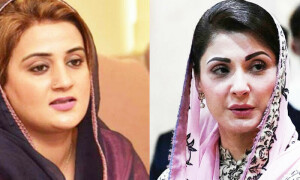PAKISTAN’S educational crisis is rooted in inequality. Nowhere are national socioeconomic and gender fault lines more apparent than in the education sector. In this regard, a recent report by the Idara-i-Taleem-o-Agahi, titled Measuring the Impact of Covid-19 on Education in Pakistan, confirms what education experts have been saying all along: “girls experienced greater learning losses than boys during the Covid-19 school closure across nearly all competencies and classes”. Even before the pandemic, Pakistan was among the 10 countries identified by Unesco where girls from poverty-stricken homes spent less than two years of their life in school. Several surveys in the past two years have highlighted the drastic increase in student drop-out rates and learning losses. However, this new report provides significant insights into how almost all vulnerabilities in the education sector — poverty, unequal access to school, socioeconomic barriers —hamper girls’ education. According to the report, school enrolment for boys in the age groups of 3-5 and 6-16 years was 58pc and 61pc. In contrast, girls’ enrolment for the same age groups was 42pc and 39pc. Similarly, the report states that more girls dropped out of school during the pandemic than boys.
Secondly, girls who remained in school faced larger learning losses as compared to their male classmates, even if they were outperforming them before the pandemic. “This is the case across most competencies — mathematics, Urdu literacy and English,” asserts the report. For example, in 2019, 28pc girls as compared to 25pc boys could read Urdu words in Class 1. However, in 2021, only 16pc of girls were able read Urdu words as compared to 19pc of boys. Though learning losses are significant for both, girls appear to be more affected. These and other figures in the report reflect the gender imbalance in society. Many sections of society place a premium on boys’ education, while girls are expected to take up domestic responsibilities. In families where affordability is an issue, a girl’s education is deemed less important than that of her brothers. In the same vein, more boys have access to digital means of study than girls, naturally affecting the continuity of their studies. The task of reforming education in Pakistan, then, is a difficult but not impossible one. As the report recommends, the government can start investing in girls’ education by ensuring that at least 50pc of the recipients of education support schemes are girls. Leaving girls behind is no longer an option.
Published in Dawn, March 28th, 2022










































